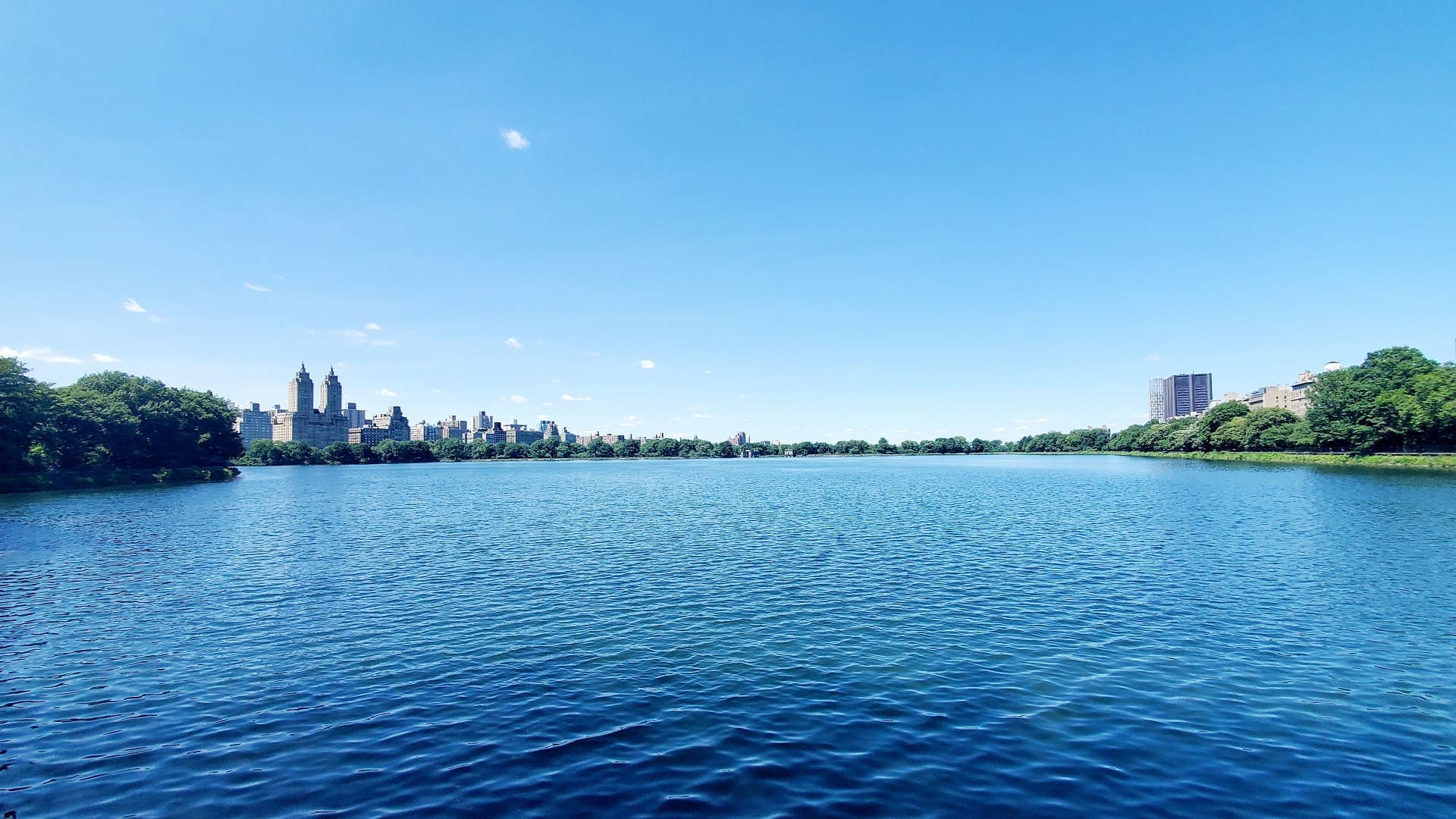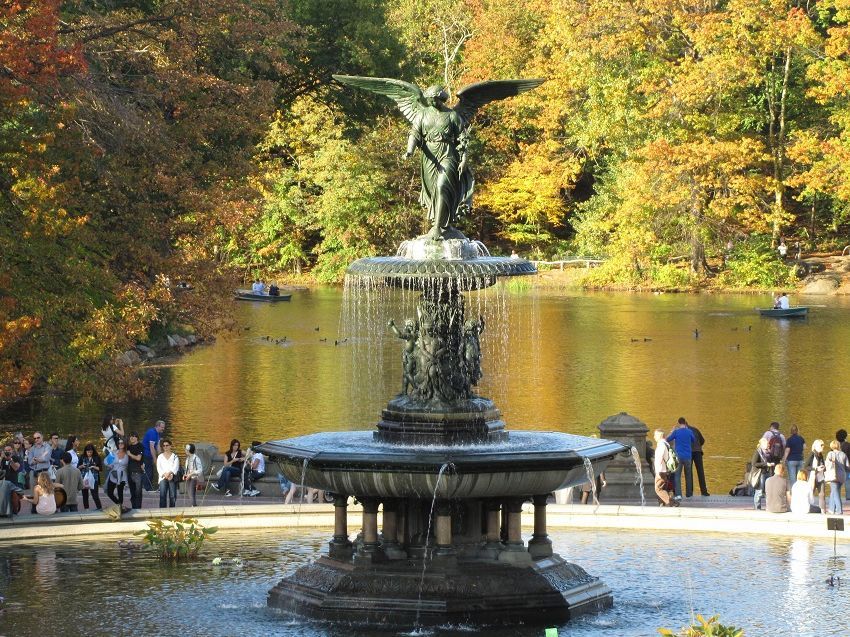History 101 – how Central Park was created
A brief history lesson
We all love Central Park. We love having a bicycle ride on the Mall, a relaxing pedicab tour to Bethesda Terrace, a picnic on Sheep Meadow, or just hanging around The Reservoir. But have you ever thought how all this was created? Is it a creation of the all-mighty Mother Nature? Or is it a man-made masterpiece? You’re more than welcome to read bellow.

Inception and first ideas
This year Central Park will celebrate it 163th birthday. In the early 19th century, Manhattan was rapidly growing, having grown four times in population, and people were in a desperate need of open spaces for rest and recreation. In fact, such places were so scarce that people were turning to cemeteries! People were in a need of a park and where calling for it. The street grid outline didn’t include a large open space meant for recreational uses and the biggest park at that point was Battery Park in Southern Manhattan. William Cullen Bryant and Andrew Jackson Downing endorsed the idea.
The first site was Jones's Wood, but it was quickly abandoned for being small and belonging to rich owners. Also, a bill to acquire was turned down as unconstitutional. The second pick was a piece of land, lying between Fifth and Eighth Avenues. It was large, and would have the Croton Aqueduct in its center. This piece of land was known as Central Park.
Local authorities assessed and cleared nearly 34,000 lots near and in Central Park, demolishing Seneca Village and Pigtown in the process, and evicting 1,600 residents. It all costed $7.39 million (quite a bit more than the planned $1.7 million). In fact, it was more expensive than Alaska ($7.2 million.).
The design contest
In 1856, Fernando Wood, NYC Mayor in that time, proposed a design competition that was later won by the Greensward Plan by Frederick Law Olmsted and Calvert Vaux. The standout features of this plan were the large pastoral fields, massive wooded areas, and sunken transverse roads, hidden below the landscape.
Calvert Vaux, an English architect, drew inspiration from Birkenhead Park in Merseyside, England. It is considered to be first publicly funded park in England, open for all. Vaux wanted to implement this idea in the US, too.
Construction
The construction works began in 1858, but were hard and difficult due to the rocky, swampy terrain. This required about 5 million cubic feet of soil and rocks to be taken out of the area. The construction teams used more gunpowder to clear the area than it was used in the Battle of Gettysburg. Then, more than 18,500 cubic yards of fertile soil were brought to the site. Nearly 20,000 people were involved in all stages of work, and some high-tech (for that time) steam-powered machines were sent to action. All you see today is a man-made wonder!
The Lake is the first section to be officially open for the public! This happened in 1858. It took nearly 15 years and $14 million for the rest of the park to be completed. We can all agree that it was worth it.
Central Park was a very safe place. It was protected by mounted policemen at first. They were called The Keepers and were watching for some very strict regulations. Things like gambling, speech-making, picking flowers, even large picnics were prohibited. However, they were pretty effective – by 1866 there were only 110 arrests.
Most of the Southern part of Central Park was completed by 1860. 1857 saw a lot of work done on the Park, with the first section being open for public was The Lake in the Southwest section (December, 1858), closely followed by The Ramble – Olmsted’s “wild garden”. Then, 65 acres were added in the Northern part.
Due to the constantly rising construction costs, the New York State Senate tasked Swiss engineer Julius Kellersberger to present a report on the park. In 1861 he reported back with the great news that the park was a "triumphant success"!
The turbulent late 60s
Olmsted and Vaux resigned in 1862 and 1863 respectively, after clashing with Chief Commissioner Andrew Haswell Green. He sped up construction works, and tightened costs. He also purchased more lands in the North, where the Harlem Meer Lake is today.
Construction went on even during the Civil War (1861). Three major structures were completed during the war – the Music Stand and the Casino restaurant (now demolished) and the Bethesda Terrace and Fountain, marking the completion of the South park (no pun intended).

During this period, Central Park started gaining popularity. There were activities for everyone – the richer rode horses or took tours, while the poorer went ice-skating or rowing. There were a lot of concerts, too. Several structures were completed in Central Park in 1865 – the Children's District, the original Ballplayers House, and the Dairy.
1865 also marked the re-hiring of Olmsted and Vaux. However, they left (1870) after William M. Tweed – leader of the Society of St. Tammany, disbanded the commission and created a charter with five of his own men, including Green. Olmsted and Vaux were re-hired yet again in 1871, after Tweed was arrested for corruption. Mid and late 1870s marked the creation of American Museum of Natural History, Metropolitan Museum of Art, the sheepfold and Ladies' Meadow.
The 70s and the end of the 19th century
Central Park was officially opened in 1876, and it was thriving in popularity, which led to easing the measures. The Park was growing as a recreational attraction. People were playing tennis and riding bicycles. The Carousel and The Zoo quickly became very popular, too.
However, there were several problems looming on the horizon. Maintenance costs were rising rapidly, Olmsted went into a vicious circle with politicians, real estate owners, and park staff that was to blame for the decline and in the early 20th century new measures of transportation were making further destinations like Broadway and Coney Island rising in popularity amongst New Yorkers. Samuel Parsons – a landscape architect and an apprentice of Vaux, was placed in charge as NYC parks superintendent. He followed closely the plan of his famous teacher, and managed to delay the decline. However, clashes with Tammany-affiliated mayors lead to him being fired from his position.
Central Park at the dawn of the 20th century
Central Park entered the new century in a state of a decline, mostly due to the lack of interest by Tammany administration. Immigrant neighborhoods popped up at the borders of the park, which led to an even bigger surge of attendance. That, on the other hand, led to advocacy of reforms. A lot of such groups with different ideas were formed. Central Park was yet to endure a lot in the 20th century – both bad and good.



